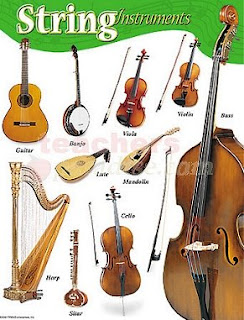 So today I want to talk a little bit about the different families of instruments that you can find in an orchestra and get familiar with the types of sounds that are available to you through Reason instruments, such as the NN19, NNXT and Combinator. Keep in mind that just because orchestral instruments are traditionally used to play classical music, that doesn't mean that they can't be incorporated into hip hop and other forms of music. Here is an example of a famous beat that combines orchestral sounds along with more modern sounds like synthesizers, drum machines, etc.:
So today I want to talk a little bit about the different families of instruments that you can find in an orchestra and get familiar with the types of sounds that are available to you through Reason instruments, such as the NN19, NNXT and Combinator. Keep in mind that just because orchestral instruments are traditionally used to play classical music, that doesn't mean that they can't be incorporated into hip hop and other forms of music. Here is an example of a famous beat that combines orchestral sounds along with more modern sounds like synthesizers, drum machines, etc.:An orchestra is just a group of instruments, usually grouped together to play classical music. The size of an orchestra can range from under 50 musicians to over 100. Take a look at how the orchestra is laid out in the diagram above. Why do you think the different categories of instruments are placed where they are?
You should be aware of this general rule:
The larger an instrument is, the lower the pitch of the sound it can make. The smaller the instrument, the higher the pitch.
For our purposes, I just want you to know the four main families of instruments found in an orchestra because it will help you to know where to look for certain types of sounds when you are making your own music.
The four families of orchestral instruments are:
- Strings - These are all the instruments that have strings. They are usually played with a bow, though sometimes they can also be plucked. Instruments in the string family typically include double basses, cellos, violas and violins. You could also throw guitars and harps into this category.
- Brass - These are metal instruments that you blow into. They tend to be extremely LOUD with a sharp tone that can cut through all the other instruments! Common instruments in the brass family include tubas, trombones, french horns and trumpets.

- Woodwinds (aka "Reeds") - These are also instruments that are blown into, though unlike brass, they make sounds by having a thin wooden reed in the mouthpiece that vibrates when you blow on it. Most woodwind instruments (but not all) are made out of wood and have a mellower sound than brass instruments. Common woodwinds are oboes, clarinets, bassoons and flutes. Interestingly, saxophones also are considered woodwinds. Why is this interesting?
- Percussion - These are instruments that you bang on, either with your hands or special sticks! Typically, they are used to make really loud statements at certain parts of the music. They include all kinds of drums and cymbals and gongs, but they can also include melodic instruments like xylophones and glockenspiels, which are played with sticks called mallets.

Now let's hear what a whole orchestra playing together can sound like...
Assignment:
Real simple. You're going to make a beat that uses instruments from each of the orchestral families of instruments using the NNXT Sample Player.
- Open Reason and start a new file (File>New)
- Create a Redrum and take no more than 15 minutes to make a beat (32 Steps please!)
- Create 4 NNXT samplers

- Load sounds from each of the 4 orchestral families and make a beat that is at least 24 bars long. You can only use sounds from the following folders: Brass, Mallets, Orchestral, Reeds and Pipes, Strings)
- Save it to your folder as "(your name)_orchestral.rns" and put a copy in the Media Share folder (Media Share>Student Work>Orchestral Beat)
- Start by browsing through different sounds until you find one that sounds cool and get inspired by that. Make a main melody using that sound and just add little touches with the other instruments
- Try changing the octave on your keyboard to change the pitches of the sounds. Certain instruments (like flutes and violins) sound better in higher octaves, while others (like tubas and cellos) sound better lower.
- Strings tend to be good for making long, rich sounds. Try holding the keys down for a while.
- Brass tends to be better for short, sharp sounds. Try playing quick little hits on the keys.
- Reeds can go either way. Try playing either short or long notes and see what sounds better.













